Brought to you by Soraya Heuss-Aßbichler and Iman Dorri from LMU Munich

The United Nations Framework Classification (UNFC) for Resources is a global principle-based classification system to communicate the maturity level of a resource-based project to investors with the required level of certainty. It was developed based on the classification of natural resources, which is also used to estimate the mineral reserves and resources in a country.
As a core tool of the United Nations Resource Management System, it provides a common language and a consistent and transparent methodology for the classification of any kind of resource, including anthropogenic resources i.e. those produced by societies as wastes or residues. Among other advantages, the UNFC can be used to support investment decisions, policy development, and sustainable resource management by identifying the enablers and barriers to the development and implementation of a project.
How can UNFC be used?
The UNFC is based on five key criteria, which are visualised by three axes:
- The E-axis represents the criteria of environmental, social and economic viability.
- The F-axis for technical feasibility including infrastructure.
- The G-axis for the degree of confidence – in the estimates of resource quantities.
Low knowledge is indicated by the number 3 or 4, while high knowledge or fulfilment of expectations is expressed by the number 1. The combination of each of these numerical E-F-G codes results in one particular class, which is visualized by a box in Figure 1. This way, each of these boxes reflects the information about the status of the project.
The classification of a project represents the current status of a project and thus communicates its potential to become commercially viable. For example, a project classified as E3-F3-G4 is a prospective project (the dark blue box 334 in Fig. 1). Any changes in the level of knowledge about the project’s criteria, or in the area of technical innovation, market, regulation, support policy, community support, etc. may lead to a reclassification of the project.
Consequently, depending on this, the project status can move towards a potentially viable project (yellow boxes, e.g. E2-F2-G2) and later become a viable project (green boxes, e.g. E1-F1-G2); this would be the development towards commercially successful projects. It could also be classified as a non-viable project (red boxes, e.g. E3-F2-G2).
An analysis of this classification can reveal why this project has no prospect of success or whether it can be turned into a success through targeted measures.
What contribution does the UNFC make to the FutuRaM project?
The FutuRaM project aims to study the availability and recoverability of secondary raw materials (2RMs). The availability of 2RMs is the focus of some key research in the project.
One area collects data on the properties of the materials from six different waste streams (batteries, construction & demolition, electronics, mining, slags & ashes and vehicles), in terms of their characteristics and composition, taking into account the different levels of product, component, material, and element.
Another area considers the waste streams and develops a consistent knowledge base for the material flow analyses, from put on market to becoming a waste.
This information is then used together with insights into technological and societal trends to forecast the supply of 2RMs to 2050 for three policy and economic scenarios: business as usual, recyclability, and circularity. At the same time, a recovery model is under development to estimate the recoverability of the 2RMs.
Elsewhere in the project the recovery model can be examined in more detail. The individual sections of the waste value chain can represent one case study and hence, it can be examined more closely, as if under a magnifying glass. A conceptual approach is developed to define, assess, and classify the results of a project based on the principles of the UNFC. The results of these case studies will be used to test the recovery model.
What is FutuRaM’s contribution to the UNFC?
The recovery of 2RMs, especially critical raw materials, from various waste streams has become imperative for a sustainable and resource-efficient future. However, there is a lack of a harmonised and holistic approach to determine and transparently communicate the potential of a project to recover valuable components (2RMs) from waste streams. Existing approaches only consider certain criteria, such as the technical feasibility of recycling and recovery projects, or use tools such as life cycle analysis (LCA) to evaluate the potential environmental impact of products or services during their entire life cycle.
The advantage of the UNFC is its generic framework, which can be applied to both primary and secondary raw materials and considers all the criteria required for a holistic evaluation of a project. The Guidance for the Application of the UNFC for Mineral and Anthropogenic Resources in Europe, describes how the document “The United Nations Framework Classification for Resources (UNFC) Update 2019” can be applied to identify the right E-F-G code.
However, it is only applicable to minerals and mining residues. It is worth noting that the evaluation and classification of projects in a standardized way has a long tradition in the mining sector. In recent years, several case studies have shown that the UNFC can be applied to end-of-life product (2RM) projects. However, the UNFC criteria are applied in different ways and there is no guidance on how to proceed.
To solve this problem, the FutuRaM partners are developing a systematic procedure for defining, evaluating and categorising a project so that it can be classified and reported following the UNFC. Overall, a standardised and transparent methodology helps to identify the drivers and barriers for project development. This facilitates decision-making for investments, strategy development and sustainable resource management.
In total, nineteen case studies are being developed:
- Ten site-specific projects with varying degrees of maturity are being carried out to test and improve the systematic approach, supported by partners from the industry.
- Nine case studies will elaborate on the application of the UNFC for national projects.
